
TSI World Sulphur Symposium 2025
The Sulphur Institute (TSI) held its World Sulphur Symposium in Florence from April 8th-10th.

The Sulphur Institute (TSI) held its World Sulphur Symposium in Florence from April 8th-10th.
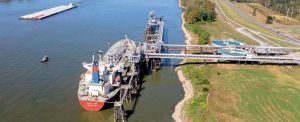
Methanol demand is rising again after a few years of relative stagnation, but with the Chinese MTO boom largely over, it looks to be energy uses which will drive most future demand.

Alfa Laval says that its ammonia fuel supply system, FCM Ammonia, will be installed in seven LPG/ammonia carriers for Tianjin Southwest Maritime (TSM). The installation will commence with three 25,000m3 vessels, followed by four 41,000m3 vessels. The first FCM Ammonia unit for TSM is scheduled for delivery at the end of 2025. The contract follows extensive testing and development conducted in close collaboration with Swiss engine designer WinGD at its Engine & Research Innovation Centre (ERIC) in Winterthur, Switzerland. Alfa Laval says that the research and development project with WinGD has laid a strong foundation for FCM Ammonia’s commercial adoption, as evidenced by K Shipbuilding receiving approval in principle in December 2024 dfrom the American Bureau of Shipping for the design of an ammonia dual-fuel MR1 tanker. Alfa Laval contributed to the design of the entire fuel system, including the ammonia fuel supply system, fuel valves train, and vent treatment system, as well as an Aalborg ammonia dual-fuel boiler system.

lomarlabs, the innovation arm of Lomar Shipping, has announced a strategic collaboration with Newlight, a technology company specialising in hybrid hydrogen-diesel engine retrofits, to accelerate the adoption of cost-effective, lower-emission solutions for the shipping industry. This collaboration will focus on retrofitting conventional diesel engines to operate on a hydrogen-diesel mix, reducing fuel consumption on average by 20% and significantly lowering greenhouse gas emissions. Savings of up to 30% have already been demonstrated in workshop trials and this new collaboration will seek to replicate this onboard vessels.
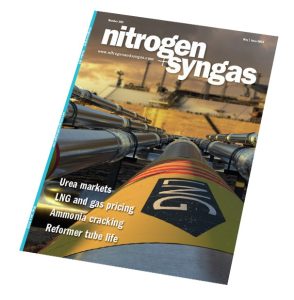
Wi th future demand for both low carbon methanol and ammonia depending to a considerable extent on their take-up as low carbon shipping fuels, recent developments in the EU and IMO may help accelerate that process, as detailed in CRU’s most recent Low Carbon Hydrogen and Ammonia Outlook.

Japan’s New Energy and Industrial Technology Development Organization (NEDO) says that the world’s first commercial-use ammonia-fuelled vessel, Sakigake, has successfully completed a three-month demonstration voyage, during which the vessel engaged in tugboat operations in Tokyo Bay, while achieving greenhouse gas (GHG) emission reductions of up to 95%. The vessel was completed by Nippon Yusen Kabushiki Kaisha (NYK) and IHI Power Systems in August 2024, in cooperation with Nippon Kaiji Kyokai (ClassNK) as part of a Green Innovation Fund Project. NEDO says that the vessel will continue to be used for tugboat operations in Tokyo Bay, and the organisation will continue to promote research and development of next-generation fuel vessels, including developing an ammonia-fuelled ammonia gas carrier, in conjunction with NYK, Japan Engine Corporation, IPS, and Nippon Shipyard. This vessel is scheduled to be delivered in November 2026.

Energy company Mabanaft and HIF Global have signed a heads of agreement for the offtake of e-methanol from, HIF’s planned e-Fuels facilities, reinforcing their commitment to advancing carbon-reducing fuels for the shipping industry. The initial offtake would be of up to 100,000 t/a of e-methanol produced from renewable electricity and captured CO2 per year. As HIF Global moves forward with the development of its e-Fuels facilities, Mabanaft says that it will further explore demand for different methanol applications jointly with its customers.
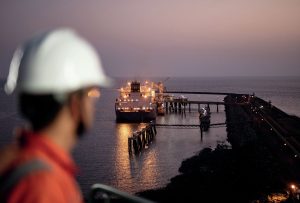
Global gas demand has returned to growth after the supply shock of 2022-23, but geopolitical tensions and short supply in LNG markets.
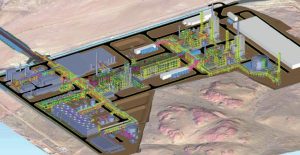
To cope with higher demand for green and blue ammonia, new ammonia terminals will be required and must be designed with respect to social and environmental challenges, as well as local permitting regulations and safety requirements. Saipem has developed a wide range of solutions to tackle those challenges and requirements by offering large-scale liquid ammonia storage and import/export terminal facilities supported on gravity based structures.
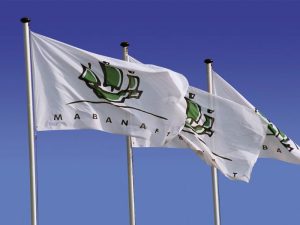
Agreement between Mabanaft and HIF Global for planned offtake of e-methanol for the shipping industry